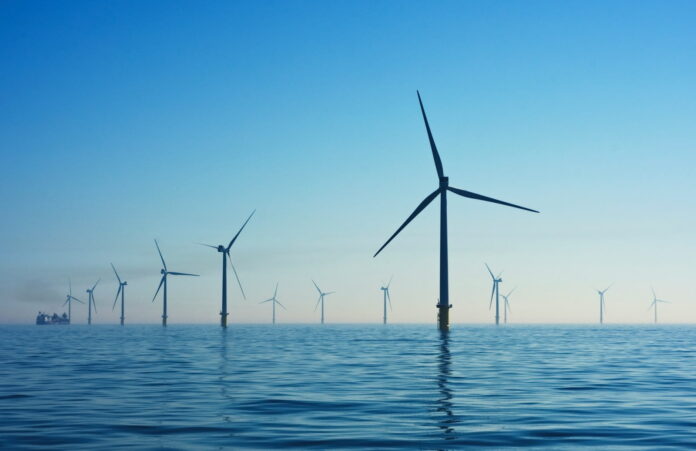Sustainable investing has emerged as a transformative force in the global financial landscape, with investors increasingly seeking opportunities that promise not only financial returns but also environmental stewardship. At the heart of this movement is wind energy, a clean, renewable resource that has the potential to significantly reduce our reliance on fossil fuels. Wind energy harnesses the natural power of wind through turbines, converting kinetic energy into electricity without emitting greenhouse gases or other pollutants. This positions wind power as a cornerstone of sustainable investment strategies, aligning economic objectives with the urgent need to combat climate change.
The allure of wind energy investments lies in their dual promise: the generation of clean power and the creation of long-term economic value. As the cost of wind technology continues to fall and its efficiency rises, wind energy is becoming an increasingly attractive option for investors. Government incentives and public support for renewable energy have further bolstered the economic case for wind power. By investing in wind energy, individuals and institutions can contribute to a more sustainable future while potentially reaping the financial benefits of a growing industry.
The Rise of Wind Energy: A Key Player in Renewable Investment Portfolios
Wind energy has experienced a meteoric rise, swiftly becoming a key player in renewable investment portfolios around the world. The global wind power capacity has grown exponentially, with significant installations across Europe, North America, and Asia. This growth is fueled by the recognition that wind energy is not only environmentally friendly but also increasingly cost-competitive with traditional energy sources. As a result, both private and institutional investors are channeling funds into wind projects, recognizing the long-term potential of this clean energy source.
The integration of wind energy into investment portfolios is also driven by the desire to mitigate risks associated with climate change and fossil fuel dependency. By diversifying into renewables, investors can protect themselves against the volatility of oil and gas markets and the potential regulatory changes aimed at reducing carbon emissions. Furthermore, wind energy projects often generate stable, predictable cash flows through power purchase agreements (PPAs), making them an attractive option for investors seeking steady returns.
How Windmills Generate Eco-Friendly Power: The Mechanics of Sustainability
Windmills, or wind turbines, are marvels of engineering that epitomize the mechanics of sustainability. These towering structures capture wind energy through their rotating blades, which are connected to a generator that produces electricity. The process is clean and efficient, with no emissions or waste products. Modern wind turbines are designed to maximize energy capture and minimize environmental impact, often incorporating materials and technologies that reduce their carbon footprint even further.
The sustainability of wind energy extends beyond the generation of electricity. The entire lifecycle of a wind turbine, from manufacturing to decommissioning, is increasingly subject to rigorous environmental standards. Manufacturers are continually seeking ways to recycle turbine components and reduce the use of rare materials. The land around wind farms can often be used for agriculture or left in its natural state, preserving local ecosystems and biodiversity.
The Financial Winds of Change: Analyzing the Economic Benefits of Wind Energy Investments
Investing in wind energy can yield significant economic benefits, both at the micro and macro levels. For individual investors, wind projects offer the potential for attractive returns, thanks to decreasing costs and technological advancements that improve efficiency. Governments and utilities also benefit from the stability and predictability of wind energy, which can help stabilize energy prices and reduce dependence on imported fuels.
On a larger scale, the wind energy sector has become a substantial driver of job creation and economic development. The industry requires a wide range of skills, from manufacturing and engineering to maintenance and operations, creating new opportunities in regions where wind farms are developed. Additionally, wind energy can contribute to energy security by diversifying the energy mix and providing a domestic source of electricity, which is particularly valuable for countries with limited fossil fuel resources.
Overcoming Challenges: Addressing the Obstacles in Scaling Wind Energy Projects
Despite its many advantages, scaling wind energy projects is not without challenges. One of the primary obstacles is the initial capital investment required to develop and construct wind farms. This can be a barrier for some investors, particularly in regions without strong financial incentives or stable regulatory environments. Additionally, wind energy can face public opposition due to concerns about visual impact, noise, and potential effects on wildlife. Addressing these concerns requires careful site selection, community engagement, and adherence to environmental regulations.
Another challenge is the intermittency of wind, which can lead to variability in power generation. This issue necessitates the development of energy storage solutions or the integration of wind power with other forms of generation to ensure a reliable electricity supply. Grid infrastructure may also need to be upgraded to accommodate the variable input from wind farms and to transport electricity from remote locations to where it is needed.
The Future of Wind Energy: Trends and Predictions in Sustainable Investment Strategies
The future of wind energy is bright, with trends indicating continued growth and innovation in the sector. Advances in turbine technology are expected to make wind power even more efficient and cost-effective, while the development of offshore wind farms promises to unlock vast new sources of renewable energy. As battery storage technology improves, the challenge of intermittency will become more manageable, further enhancing the appeal of wind investments.
Sustainable investment strategies are likely to increasingly prioritize wind energy as its benefits become more widely recognized. Investors are expected to continue seeking opportunities that align with environmental goals, driving capital towards projects that contribute to the transition to a low-carbon economy. With supportive policies and ongoing technological advancements, wind energy is poised to play a pivotal role in shaping a sustainable and prosperous future.
